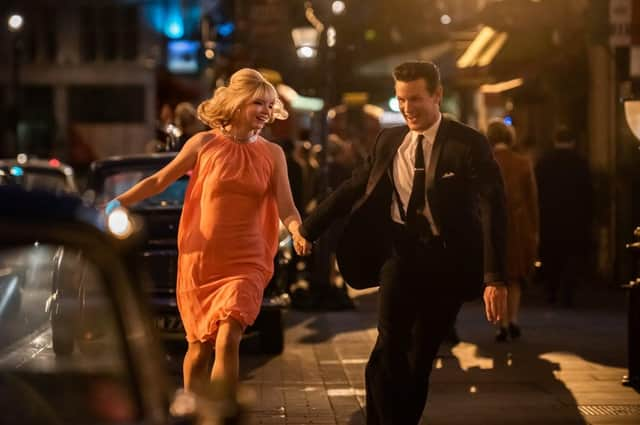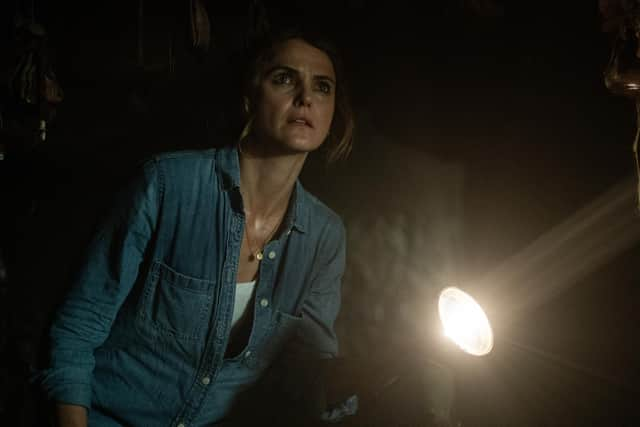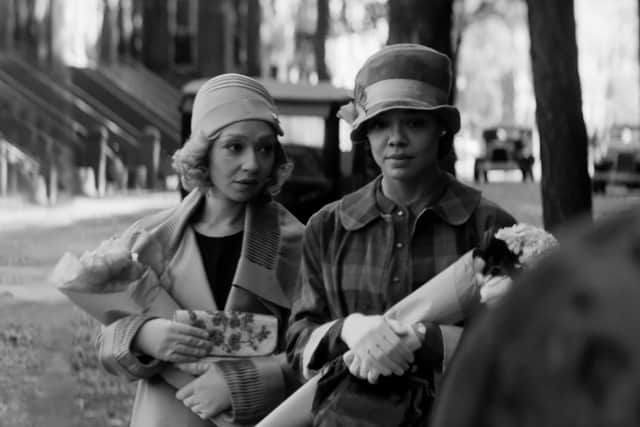Film reviews: Last Night in Soho | Antlers | Passing | The Rescue


Last Night in Soho (18) ***
Antlers (15) **
Passing (12A) ***
The Rescue (12A) ****
Edgar Wright’s new horror film Last Night in Soho opens with such a lovingly crafted ode to the Swinging Sixties it almost feels like a set-up for a British Invasion pop musical, not the full on gore-fest it becomes. Featuring a major character twirling through an old-fashioned house to the strains of Peter and Gordon’s World Without Love, it’s a subtle rug-pull that neatly upends the movie’s own timeframe, cleverly foreshadowing the supernatural-themed, era-hopping nature of the film that follows. Co-written by Krysty Wilson-Cairns, that film revolves around Eloise (Thomasin Mackensie), a 1960s-obsessed fashion student determined to make it big in London. Having hitherto lived a sheltered existence in Cornwall with her granny (Rita Tushingham), the psychologically delicate Eloise – who occasionally sees visions of her suicidal late mother in her mirror – soon finds London “a bit much”, not least because the reality doesn’t match up to the glamorous fantasy version she’s constructed in her head
Needless to say, that rose-tinted version isn’t the London of Peeping Tom, Michael Powell’s serial killer thriller from 1960. Nevertheless, that version does seem to be what’s running through Wright’s mind as Eloise discovers a dangerous dimension to her nostalgia after moving into a old-fashioned bedsit and discovering her room is a portal into the world of Anya Taylor-Joy’s Sandy, a previous occupant whose ritzy, glitzy life as an up-and-coming 1960s club singer the naive Eloise starts escaping into every night.
Advertisement
Hide AdMaking stylish use of reflective surfaces to bring both characters together in the same frame without breaking the fever-dream illusion, the film’s first half is great, playing out like a kind of Giallo-inflected riff on Woody Allen’s Midnight in Paris (Wright, ever the cinephile, uses a vintage cinema marquee of Thunderball to timestamp the movie as 1965 and has Cilla Black performing in the club underneath). But as a sleazier side to this world emerges, the film abandons whatever internal rules it has set up for itself, pushing the plot forward with good old dream logic instead as Eloise becomes obsessed with solving a blood-soaked mystery in the past while wrestling with her sanity in the present. The more it descends into conventional ghost story territory, the less satisfying it becomes and though casting 1960s icons such as Tushington, Terence Stamp and the late Diana Rigg is a nice touch, it can’t distract from the hoary horror clichés Wright repeatedly deploys.


On the subject of hoary horror clichés, Antlers has plenty, starting with the disturbed kid whose creepy drawings are presented as a “cry for help” but are really a way for the film’s should-know-better co-writer/director Scott Cooper (Crazy Heart) to dump a load of exposition on us regarding the story’s fantastical conceit. That conceit involves a mythical woodland creature, but while it’s treated with the utmost solemnity by wrapping it up in a story about neglected children in a blue-collar town riven with drug abuse, the moment a Native American character (played by Graham Greene) is wheeled out to tell us more about it, it’s hard to take seriously.
Despite this, Keri Russell does good work as a teacher who recognises that something is off with one of her students – and Jesse Plemons is his usual reliable self as Russell’s formerly estranged brother. But the film leaves you with the sense that Cooper would rather be working on a straight drama, not a monster movie.
Set in Harlem in the 1920s, Passing sees British actor Rebecca Hall make her directorial debut with a sometimes artful, sometimes stagey adaptation of Nella Larson’s 1929 novella about two friends whose mixed race heritage allows them to move between black and white society with relative ease. Revolving around the complications that ensue when the upwardly mobile life of doctor’s wife Irene (Tessa Thompson) inspires former childhood friend Claire (Ruth Negga) to reconnect with the culture she’s been forced to leave behind since marrying an unsuspecting racist (Alexander Skarsgard), the film delves into the messy ways race and class warp progress.
Stylistically, Hall opts to follow the lead of a lot of recent arthouse films by shooting it in boxy academy ratio to signify how hemmed in her characters are – and her use of black-and-white can seem similarly on the nose. Yet there are inspired touches too, such as the way she films exterior scenes with a kind of over-exposed look, as if the image system of the film itself is pressuring the characters to live in a lighter, whiter world intent on systematically eradicating their true selves.


The latest documentary from Free Solo directors Elizabeth Chai Vasarhelyi and Jimmy Chin, The Rescue serves up a heart-in-mouth account of the headline-grabbing 2018 operation to save 12 boys and their young football coach after heavy rain trapped them in an elaborate cave system in Northern Thailand. Drawing on news footage, talking head-interviews, seamless recreations and actual video shot by the rescue teams, it brilliantly tells the story of how an unlikely group of middle-aged British and Australian cave-diving hobbyists, Thai navy seals and the American military came together to attempt to save them. Even if you know the outcome, it’s an emotional rollercoaster of a story, shot through with the ticking-clock tension of a Mission: Impossible movie.
Advertisement
Hide AdLast Night in Soho and Antlers are on general release from Friday; Passing is on select release from Friday and on Netflix from 10 November; The Rescue is on select release and digital demand from Friday.
A message from the Editor
Thank you for reading this article. We're more reliant on your support than ever as the shift in consumer habits brought about by coronavirus impacts our advertisers.
If you haven't already, please consider supporting our trusted, fact-checked journalism by taking out a digital subscription at https://www.scotsman.com/subscriptions